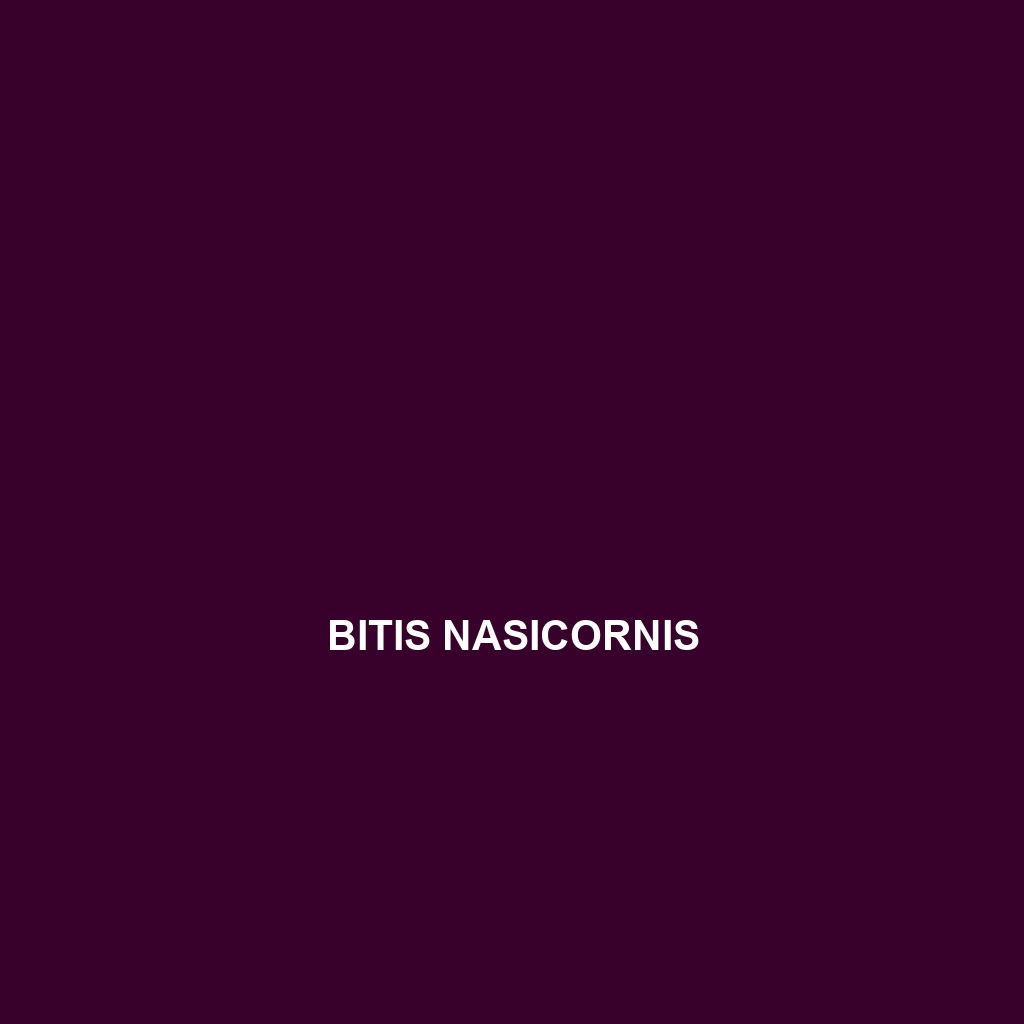Bitis nasicornis Species Description
Common Name: Bitis nasicornis
Scientific Name: Bitis nasicornis
Habitat
Bitis nasicornis, commonly known as the rhinoceros viper, inhabits the dense rainforests of Central and West Africa, specifically in countries such as Cameroon, Gabon, and the Republic of Congo. This species prefers humid, tropical environments, often found near water bodies like rivers and swamps, where it can easily find shelter among the foliage and leaf litter.
Physical Characteristics
The rhinoceros viper is well-known for its striking appearance, typically reaching lengths of 70 to 90 cm (28 to 35 inches). Its body exhibits a vivid coloration with a combination of green, blue, and reddish-brown hues, making it one of the most beautiful vipers. A unique feature of Bitis nasicornis is its distinctive horn-like structures above its eyes, which play a role in camouflage and display. This species has a stout, triangular head and keeled scales, providing it with a rugged look.
Behavior
Known for its ambush predation tactics, Bitis nasicornis is primarily nocturnal, becoming more active at night when it hunts. During the day, it often remains motionless on tree branches or on the forest floor, using its striking coloration for effective camouflage. This species is also known for its defensive behavior; when threatened, it can display a striking posture, exposing its vibrant colors as a warning to potential predators.
Diet
The diet of the rhinoceros viper mainly consists of small mammals, birds, and amphibians. Utilizing its heat-sensing pits, Bitis nasicornis effectively locates warm-bodied prey, striking with venomous precision. This species has a significant role in its ecosystem, controlling the populations of its prey species, thereby maintaining ecological balance.
Reproduction
Bitis nasicornis exhibits ovoviviparous reproduction, giving birth to live young rather than laying eggs. The breeding season typically occurs during the rainy months, with females giving birth to a litter of 10 to 30 young after a gestation period of about six months. Offspring are born fully developed and exhibit the same vibrant coloration as adults, which aids in their survival from birth.
Conservation Status
According to the International Union for Conservation of Nature (IUCN), Bitis nasicornis is currently classified as ‘Least Concern.’ However, habitat loss due to deforestation and the illegal pet trade poses potential threats to its population. Preservation of its rainforest habitat is crucial for ensuring the survival of this species in the wild.
Interesting Facts
One of the most fascinating aspects of Bitis nasicornis is its remarkable ability to camouflage within its environment, making it challenging for both predators and prey to detect. Moreover, its venom is used in traditional medicine in some cultures, showcasing its significance beyond mere ecological roles.
Role in Ecosystem
Bitis nasicornis plays an essential role as a predator in its rainforest habitat, helping regulate the populations of small mammals and birds. By controlling these species, it helps maintain a balanced ecosystem. Additionally, as prey for larger animals, the rhinoceros viper serves as a crucial link in the food web, showcasing the interconnectedness of forest ecosystems.
